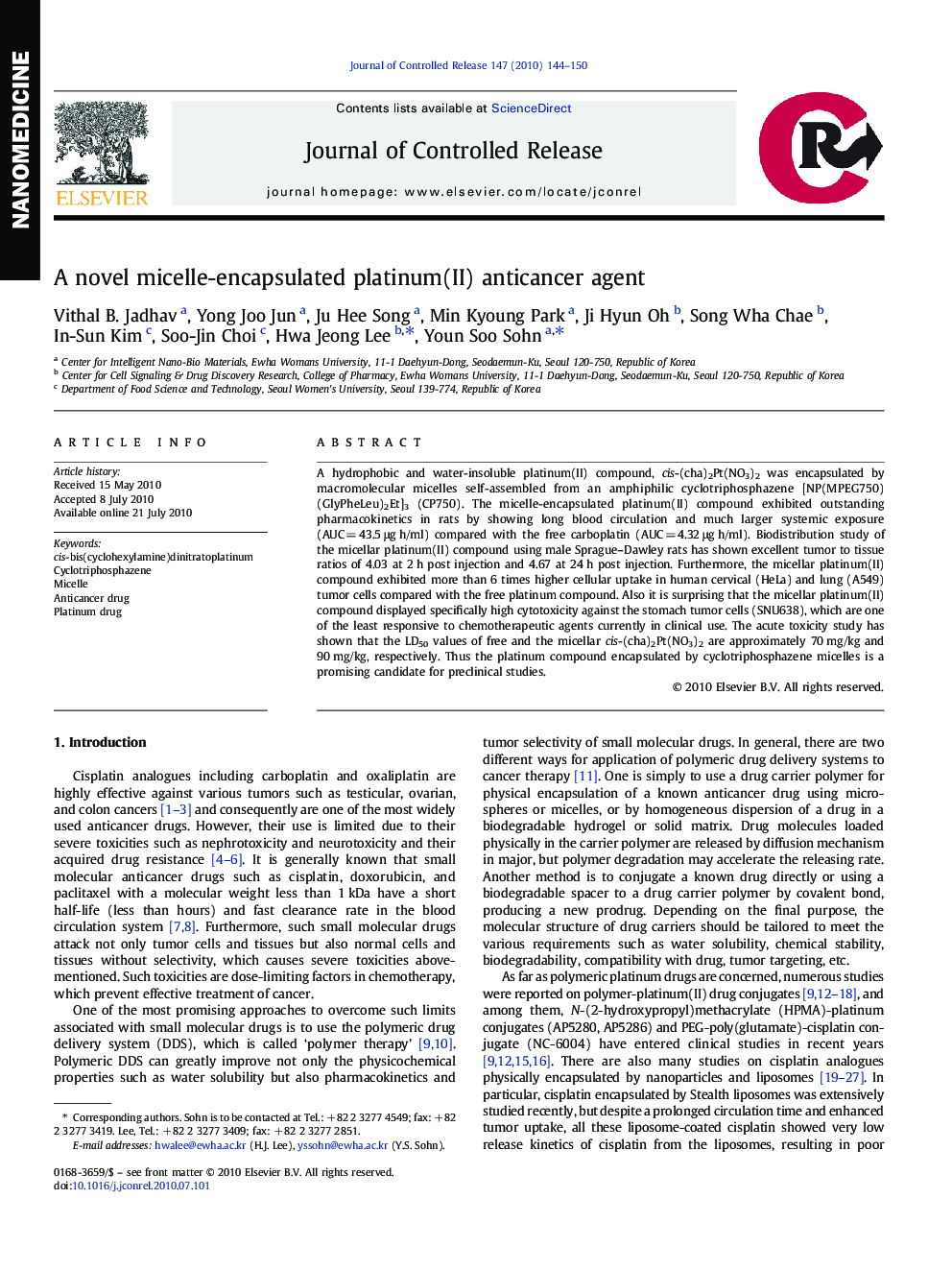| Article ID | Journal | Published Year | Pages | File Type |
|---|---|---|---|---|
| 1425481 | Journal of Controlled Release | 2010 | 7 Pages |
A hydrophobic and water-insoluble platinum(II) compound, cis-(cha)2Pt(NO3)2 was encapsulated by macromolecular micelles self-assembled from an amphiphilic cyclotriphosphazene [NP(MPEG750)(GlyPheLeu)2Et]3 (CP750). The micelle-encapsulated platinum(II) compound exhibited outstanding pharmacokinetics in rats by showing long blood circulation and much larger systemic exposure (AUC = 43.5 μg h/ml) compared with the free carboplatin (AUC = 4.32 μg h/ml). Biodistribution study of the micellar platinum(II) compound using male Sprague–Dawley rats has shown excellent tumor to tissue ratios of 4.03 at 2 h post injection and 4.67 at 24 h post injection. Furthermore, the micellar platinum(II) compound exhibited more than 6 times higher cellular uptake in human cervical (HeLa) and lung (A549) tumor cells compared with the free platinum compound. Also it is surprising that the micellar platinum(II) compound displayed specifically high cytotoxicity against the stomach tumor cells (SNU638), which are one of the least responsive to chemotherapeutic agents currently in clinical use. The acute toxicity study has shown that the LD50 values of free and the micellar cis-(cha)2Pt(NO3)2 are approximately 70 mg/kg and 90 mg/kg, respectively. Thus the platinum compound encapsulated by cyclotriphosphazene micelles is a promising candidate for preclinical studies.
Graphical AbstractA hydrophobic and water-insoluble cis-(cha)2Pt(NO3)2 micelle-encapsulated by self-assembly from an amphiphilic cyclotriphosphazene exhibits not only outstanding pharmacokinetics and tumor selectivity but also specifically high cytotoxicity against the stomach tumor cells.Figure optionsDownload full-size imageDownload as PowerPoint slide
